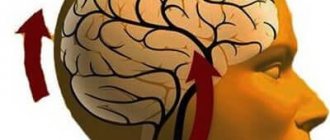Vegetative-vascular dystonia is a chronic pathology that occurs with various symptoms. Blood pressure may change, heart pain, headache. This disease is more often diagnosed in young girls. Below is information about how VSD occurs according to the hypotonic type.
This disorder is one of the most controversial in modern medicine. Some doctors deny the existence of such a pathology and attribute to it signs of other diseases. Other specialists often diagnose this disease, justifying the vivid clinical picture with numerous complaints without symptoms of organic disorders of the central nervous system or the circulatory system.
Today, this disease is diagnosed only in the CIS countries. In other states, the set of symptoms is not recognized as this type of pathology. There are no such diagnoses in the international classification of disorders. Neurocirculatory asthenia is considered the closest disease to VSD.
The main distinguishing feature of hypotonic type VSD and other types of VSD is considered to be poor blood pressure. The prognosis for this disease is often favorable, since with this disease there is no organic damage to the blood vessels and heart muscle. In certain categories of patients, the symptoms are so severe that they can significantly worsen the quality of life.
Since the causes of such a disease are difficult to determine, it will be difficult to completely cope with it. In most patients with VSD, signs of the disease are reduced and eliminated.
Taking into account the prevailing syndromes, this disorder is dealt with by therapists, cardiologists, and psychotherapists.
VSD of the hypotonic type - what is it?
VSD of the hypotonic type is a type of dysfunction of the ANS (autonomic nervous system), associated with hyperactivity of its parasympathetic department. VSD of the hypotonic type develops less frequently than vegetative-vascular dystonia of the hypertonic or mixed type.
The development of symptoms of vegetative-vascular dystonia of the hypotonic type is based on a decrease in blood pressure below 90/60 mmHg (normally, the optimal pressure for an adult is considered to be a pressure of 120/80 mmHg, fluctuations are possible +/- 10 mmHg.).
For reference. VSD of the hypotonic type most often develops in girls of asthenic physique, mainly in adolescence. With age, the incidence of hypotonic VSD decreases.
Patients over 40 years of age more often develop vegetative-vascular dystonia of the hypertensive and mixed types.
VSD and hyperactivity of the parasympathetic nervous system
When the parasympathetic nervous system is activated, there is a decrease in blood pressure, activation of the production of digestive enzymes and increased gastrointestinal motility, increased salivation, and a decrease in pulmonary ventilation.
There is also an expansion of the arteries of the lungs, coronary arteries and vessels responsible for the blood supply to the genital organs.
Normally, the work of the parasympathetic nervous system is balanced by the synchronous work of the sympathetic nervous system. The sympathetic division of the nervous system is responsible for functions opposite to the work of the parasympathetic division (increased blood pressure, increased heart rate).
For reference. Due to the coordinated work of the sympathetic and parasympathetic parts of the nervous system, the constancy of the internal environment of the body is maintained and its adaptation to changes in the external and internal environment is ensured.
Excessive activation of the parasympathetic nervous system is accompanied by a chronic decrease in blood pressure, increased gastrointestinal motility, the appearance of cramping abdominal pain and other uncomfortable sensations.
How can the disease be effectively treated?
If the above measures do not eliminate the symptomatic manifestations, doctors resort to prescribing medications :
- Drug treatment: sedative therapy - herbal medicine (valerian, hawthorn, St. John's wort, wormwood, peppermint, dog nettle); tranquilizers (Diazepam, Phenazepam, Mebicar, Phenibut, Oksidin, Amizil). If recommended by a psychotherapist, antidepressants.
- If necessary: adaptogens (ginseng, eleutherococcus), B vitamins, nootropics (nootropil, piracetam), drugs with metabolic effects (trimetazidine, mildronate).
- Reflexology: acupuncture, magnetic reflexotherapy.
- Physiotherapeutic procedures aimed at activating the sympathetic nervous system: paraffin, ozokerite, pine and salt baths, contrast shower.
- Active massage at a fast pace.
Reasons for the development of hypotonic VSD
For reference. The main reason for the development of vegetative-vascular dystonia of the hypotonic type is a disruption of the autonomic nervous system, accompanied by excessive activity of the parasympathetic division of the ANS.
The reasons for the development of hypotonic type VSD can be:
- intrauterine development disorders, intrauterine growth retardation, intrauterine infections, fetal hypoxia, low birth weight, congenital developmental anomalies;
- injuries to the head, neck and thoracic spine;
- concomitant endocrine and somatic diseases;
- osteochondrosis and hernia of the cervicothoracic spine;
- previous neuroinfections.
The appearance of symptoms of vegetative-vascular dystonia of the hypotonic type can also be provoked by stress, chronic fatigue, physical and psycho-emotional stress, changes in hormonal levels in adolescence, during pregnancy or after menopause.
Risk factors for the development of VSD of the hypotonic type also include smoking, alcohol abuse, lack of sleep, a sedentary lifestyle and lack of physical activity.
In women, exacerbation of symptoms of vegetative-vascular dystonia is often associated with menstruation. It is also possible for signs of VSD to appear against the background of weather changes, magnetic storms, after a flight, climate change, or time zone.
Treatment
After establishing a diagnosis, doctors begin choosing a treatment method. There has long been debate about the choice of drug treatment or non-drug therapy. One way or another, each side has arguments in their favor and disadvantages.
Some experts believe that the correct treatment would be a combination or alternation of them. This will allow you to achieve maximum results in treatment. Treatment should begin with non-drug treatment.
Non-drug treatment
The first step is to carry out etiological therapy. We need to find the cause of the disease and eliminate it.
Stress relief
Many people deal with stressful situations and overstrain of the nervous system every day. For them, there are special courses on mastering self-control, such as yoga.
Doctors recommend starting to play sports (gym, martial arts). It has been proven that physical activity has a positive effect on the mental component of the human body.
Psychotherapist
Sometimes sports or yoga do not always help patients. The problem is themselves and what is in their heads. Sometimes it can be withdrawal into oneself or, conversely, incontinence. Hence the disorders caused by the nervous system. In this case, psychotherapists will help get to the root of the cause and remove it.
Relaxation
To relieve stress in the body, visiting massage sessions, SPA treatments, and saunas always helps. Even pleasant music in a warm bath will help relieve fatigue and give you new strength the next day.
Sports and fresh air
Sport greatly helps in relieving stress. In addition, its main advantage is strengthening the body. However, this does not mean that everyone needs to exercise a lot.
Light jogging, cycling, swimming is enough. You need to include more time outdoors. Walking in the park or forest has a good effect on the body as a whole. Anything that tones the body is good for the treatment of hypotensive VSD.
Diet
You need to include more fresh and healthy foods in your diet. Fruits, vegetables, lean meats, steamed or oven-baked, dairy products. Fried, spicy, salty, sweet and baked goods should be excluded.
Elimination of bad habits
Giving up bad habits gives a strong impetus to the treatment of pathology. If you can’t quit smoking or drinking on your own, you need to ask for help from loved ones or doctors. There are many centers where people with such problems are helped.
Drug treatment
After treatment without the use of drugs has been established and the effect needs to be enhanced, or there was no effect of treatment at all, doctors begin prescribing medications. These include hormonal drugs, sedatives, antidepressants, tranquilizers, nootropic drugs. Depending on the reason, they are combined for better results.
At-risk groups
The main risk factor for the development of vegetative-vascular dystonia of the hypotonic type is heredity. Vegetative-vascular dystonia is transmitted more often through the female line. If the mother has symptoms of vegetative-vascular dystonia, then the daughter is likely to also have VSD.
In men, symptoms of VSD are recorded less frequently, and the disease is also less often transmitted through the male line.
For reference. Typically, the risk group for the development of symptoms of vegetative-vascular dystonia of the hypotonic type includes asthenics.
The asthenic body type is characterized by tall stature, thinness, a long thin neck, narrow shoulders and graceful limbs. Asthenics are thin, have difficulty gaining weight and muscle mass, are prone to arterial hypotension and do not tolerate cold well.
Most often, VSD of the hypotonic type is observed in women of asthenic physique.
Risk factors for the development of vegetative-vascular dystonia also include:
- abuse of alcohol and tobacco products;
- chronic lack of sleep;
- night shift work;
- prolonged overwork and/or chronic fatigue;
- excessive physical activity;
- stressful hard work;
- frequent flights;
- work in stuffy and hot rooms
- sedentary lifestyle and lack of moderate physical activity.
Who is at risk of getting VSD?
It is important to find out who can be considered a representative of the risk group for developing VSD:
- Young people who do not lead a very active lifestyle.
- People, especially women, who already have problems with low blood pressure.
- Elderly people who had hypotension in their youth.
Both young and old people are susceptible to the disease
Important! Today, some people make a diagnosis for themselves such as VSD, determining this on the basis of several symptoms. In fact, even many specialists cannot make an accurate diagnosis without first prescribing an examination, so you should not trust only your feelings and sensations; it is recommended to undergo an examination at a clinic and take the appropriate tests.
VSD of the hypotonic type - symptoms
The main manifestation of VSD of the hypotonic type is a decrease in blood pressure below 90/60 mmHg.
As blood pressure drops below normal, the following are observed:
- constant weakness, lethargy, drowsiness, lethargy;
- decreased performance, decreased memory, deteriorated ability to assimilate new information;
- increased sweating;
- anxiety, suspiciousness, attacks of unmotivated fear, attacks of hypochondria, neuroses and depressive disorders;
- sleep disturbances , insomnia , superficial restless sleep that does not bring a feeling of freshness and proper rest;
- headaches, attacks of dizziness ;
- nausea, loss of appetite;
- noise in ears.
— Systemic manifestations
Cardiac symptoms of VSD of the hypotonic type are manifested by aching dull pain in the heart, heart rhythm disturbances, increased heart rate (bradyarrhythmia, a decrease in heart rate, is less common). Less often, patients are bothered by short-term burning pain in the heart area.
Some common complaints include a feeling of a “fading” heart, as well as pulsation throughout the body. Patients may be bothered by pulsation in the head (especially when they go to bed), in the abdomen, and limbs.
For reference. Respiratory symptoms of hypotonic type vegetative-vascular dystonia can manifest as shortness of breath, frequent feeling of lack of air, discomfort and chest pain when trying to take a deep breath.
Sometimes patients complain of a feeling of a “lump” in the throat.
Disturbances in the functioning of the gastrointestinal tract are manifested by dyspeptic disorders. Patients are concerned about nausea (morning attacks of nausea are often observed), vomiting, loss of appetite, belching, heartburn, stool disorders (a tendency to constipation is noted, diarrhea or alternation of constipation and diarrhea is less often recorded).
Disturbances in thermoregulation are manifested by poor tolerance to cold (also, many patients with hypotonic VSD do not tolerate heat and stuffiness well), frequent chills, chilliness, coldness of the extremities (such patients often experience coldness of the hands and feet for no apparent reason even in the warm season).
Against the background of a pronounced decrease in blood pressure, severe dizziness and fainting may occur.
For reference. Disturbances in the emotional sphere are manifested by increased irritability, tearfulness, suspiciousness, a tendency to neuroses and depressive disorders.
Disturbances in the functioning of the genitourinary system are less common. Patients may experience frequent urination and pain when urinating. Anorgasmia (lack of pleasure from sexual intercourse, while maintaining sexual desire) is also possible.
Diagnosis of VSD: what it is, symptoms and treatment of this disease - Website about
The human autonomic nervous system is very complex, and various deviations from its normal functioning are unusually diverse.
This gives the opportunity and reason for doctors of many specialties (cardiologists, psychotherapists, neurologists and others) to make the same diagnosis - VSD. What it is is easy to decipher. VSD is understood as vegetative-vascular dystonia. The problem is that this condition is not considered an independent disease, but is considered only as one of the symptoms of other ailments, of which there are several dozen. Let's consider how VSD manifests itself, what causes it, and whether this condition requires treatment.
Formulation of the diagnosis of VSD
Note that the International Classifier does not include the disease “vegetative-vascular dystonia”. Some experts consider VSD as a specific manifestation of Da Costa's syndrome. This is not entirely true, since the above syndrome is caused by post-traumatic stress disorder.
No less often, the diagnosis of VSD is made, implying somatoform autonomic dysfunction (SVD), which has code F 45 in ICD-10. 23.
This is also not an entirely correct diagnosis, since SVD implies a condition in patients in which the functioning of organs is disrupted without any changes in their structure and without pathological processes that could cause such disturbances.
SVD is more associated with prisogenic and mental illnesses, and VSD covers a wider range of diseases. To the question “Diagnosis of VSD - what is it?” it would be more correct to answer that this is a large-scale complex of all kinds of functional disorders based on impaired vascular tone in the brain and/or spinal cord.
This diagnosis occurs in 80% of cases of patient complaints about functional malfunctions in various organs, including the heart, stomach, intestines, and genitourinary system. The autonomic nervous system (ANS) functions autonomously, that is, it is not subject to commands and control from other parts of the nervous system.
A person cannot force it to function the way he wants (for example, to order the heart to beat faster), but through his actions he can positively or negatively influence its work. It regulates the activity of almost all organs, ensures hemostasis and many biochemical processes.
To better understand what the diagnosis of VSD means, let’s look at this important system in more detail.
Features of VNS
What the nervous system is is clear to everyone. It was called vegetative from the Latin word “vegetatio”, which means “excitement”. Anatomically and according to the functions it performs, it is divided into three sections: sympathetic, parasympathetic and metasympathetic.
The activity of the sympathetic and parasympathetic departments is controlled by the cerebral cortex and hypothalamic centers. These two systems are designed in such a way that they have a central department and peripheral subdivisions.
The central section in the form of neuron bodies is concentrated in the spinal cord and brain. Nerve fibers and ganglia located outside the central nervous system and going to all organs form the periphery of the ANS.
That is, the activity of this system extends to almost the entire body and to each of its organs. The only exception is skeletal muscles.
The metasympathetic division is a network of nerve fibers and small ganglia in the stomach, heart, and bladder.
Functions performed
To understand the diagnosis of VSD, you need to know how the autonomic nervous system works. As noted above, it controls the condition of almost all organs. The sympathetic and parasympathetic departments are similar in structure, but they perform exactly the opposite actions.
Sympathetic:
- Increases the frequency and strength of heart contractions.
- The arteries dilate.
- Intestinal function (enzyme production, peristalsis) is inhibited.
- Salivation is blocked.
- The bladder relaxes.
- The pupils dilate.
- Ventilation of the lungs is enhanced.
Parasympathetic:
- Reduces the frequency and strength of heart contractions.
- It affects arteries differently. Coronary and pulmonary narrows, located in the brain and in the genitals expands, does not affect the rest.
- Stimulates intestinal function.
- The bladder contracts.
- Ventilation of the lungs is reduced.
- Increases salivation.
- The pupils narrow.
Thus, in order for the human body to exist normally, the work of these two systems must be completely balanced.
In addition, the ANS must be able to adapt to the constantly changing external conditions in which the body finds itself.
If the slightest disruption in the balance of interaction between the parts of the ANS occurs, organs and entire systems of the human body cease to function correctly, which is the reason for making a diagnosis of VSD. What this could mean for the patient, we will consider further.
Diseases and conditions with VSD syndrome
It was noted above that vegetative-vascular dystonia affects almost all organs of the human body. Therefore, the list of diseases for which many patients were diagnosed with VSD is quite extensive:
- Dysfunction of the heart and the entire cardiovascular system.
- Mitochondrial diseases (hereditary pathologies in mitochondria, causing diabetes mellitus, deafness, Leigh syndrome, Wolff-Parkinson syndrome, Leber neuropathy, ataxia, ptosis, dementia and others).
- Any hormonal disorders (dyzovarial disorders, pregnancy, childbirth).
- Focal infections.
- Physical inactivity.
- Osteochondrosis of the cervical spine.
- Hereditary dysplasia.
- Allergy.
- Diabetes.
- Hypothyroidism.
- Thyrotoxicosis.
- Diseases of the nervous system.
- Occupational diseases.
External factors that provoke VSD are the following:
- Smoking.
- Alcoholism.
- Stress.
- Various infections.
- Overwork.
- Intoxication.
- Head injuries.
- Exposure to vibration, radiation, microwave.
- High coffee consumption.
Symptoms
There is a certain pattern on the basis of which the diagnosis of VSD is made. What could this mean? The fact is that the symptoms of this syndrome are extremely wide. It includes about 150 different manifestations and signs. Therefore, patients with VSD, as a rule, have many complaints about certain somatic disorders.
In general, the following manifestations of the syndrome noted by most patients can be distinguished:
- Asthenia (mood instability, extreme weakness, impatience, insomnia, night awakenings, exhaustion, fatigue, painful perception of many sharp sounds, smells, light, etc.).
- Cardialgia.
- Cardiac disorders.
- Headache.
- Myalgia.
- Cardiophobia.
- Trembling in hands.
- Breathing disorders.
- Swelling.
- Joint pain.
- Dizziness, fainting.
- Nervous disorders of various types.
- Orthostatic hypotension.
- Feeling of icy hands and feet.
- Feeling as if face is on fire.
Associated syndromes
Answering in detail the question “The diagnosis of VSD - what is it in an adult or a child?”, one cannot ignore the clinical syndromes that occur with this condition. We have already mentioned above the three sections of the ANS.
The dysfunction of functions in each of them has its own characteristic features.
So, in the sympathetic department this is tachycardia, pallor of the skin, chills, hypertension (pressure can be up to 180/110), numbness of the extremities, temperature (up to 39°C), pulse (up to 140 beats per minute), cardialgia.
- Parasympathetic disorders have such characteristic signs as bradycardia, sweating, redness of the face, difficulty breathing (suffocation), heat throughout the body (without rising temperature), miosis, hypotension, rare pulse (up to 50 beats per minute), heaviness in the head.
- In mixed disorders, various symptoms from the list above are observed.
People diagnosed with VSD may experience the following syndromes:
- Mental disorders (manifested by tearfulness, phobias, anxiety, irritability, sleep disturbance, hypochondria).
- Adaptation disorders (manifested by fatigue, weakness, weather dependence).
- Respiratory (patients complain of lack of air, a feeling of tightness in the chest).
- Neurogastric (manifested by spasms of the esophagus, flatulence, stool disorders, heartburn).
- Cardiovascular (patients experience pain in the left side of the chest, complain of instability of blood pressure, tachycardia and arrhythmia).
- Cerebrovascular disorders (this syndrome manifests itself as frequent headaches, dizziness, fainting, and tinnitus).
- Syndrome of vascular and tissue disorders (characterized by edema, myalgia, angiotrophoneurosis).
Classification
Based on the above symptoms and manifestations, VSD was divided into several types, which became one of the forms of classification of this condition. It distinguishes three categories of VSD:
- Hypotonic type. Signs: fatigue, low blood pressure, clammy palms, pale skin, headaches, muscle weakness.
- Hypertensive type. The diagnosis of VSD is made based on the main symptom – increased blood pressure. Patients may also complain of headaches, fatigue, weakness and other manifestations of hypertension.
- Cardiac type. In this case, patients complain of cardiac disorders, but the ECG does not show noticeable disruptions in the functioning of this organ.
- The diagnosis of VSD of the mixed type is made if patients experience several symptoms of dysfunction of different organs at once, for example, high blood pressure and tachycardia, arrhythmia, fatigue.
VSD in adults
Note that quite often vegetative-vascular dystonia begins to manifest itself at the age of 12-15 years. In older people, it persists or manifests for the first time in the following cases:
- Work under a busy schedule (no vacation, no days off).
- High workload of the day (no time for proper sleep).
- Frequent conflicts with the immediate environment (family, co-workers, neighbors).
- Too emotional.
- Indifference to oneself and others, apathy, isolation on one’s own person.
- Unsettled life and everyday life.
The above reasons provoke the diagnosis of VSD in adults. What does this mean? Over the years, most people accumulate psychological and physical fatigue, the body is weakened by many diseases, and various obligations to family or society create a great burden. For smokers and drinkers, prolonged intoxication is added to everything else.
All this leads to the fact that many body systems malfunction. Nervous disorders, cardialgia appear, blood pressure jumps, sleep problems begin, depression, depression, all kinds of fears (justified and not), and uncertainty about the future occur. This condition should not be ignored or attempted to be dealt with without the help of specialists.
Diagnosis of VSD in a child, what does this mean?
As children grow up, they go through a difficult period of hormonal changes in the body. In everyday life this is called “transitional age”.
It is at this time that many symptoms of VSD most often appear, especially syndromes of mental disorders, cerebrovascular abnormalities, and asthenic syndrome. Teenagers experience phobias, all sorts of complexes, sometimes leading to tragic consequences, and depressive states.
Some children completely withdraw into themselves and lose interest in life, while others try to cope with the situation by showing extreme aggressiveness or even cruelty towards others.
In addition, adolescents diagnosed with VSD experience various somatic disorders. It happens that VSD is also diagnosed in younger children. This leads to:
- High school loads (especially if the child additionally attends several clubs).
- Frequent and long periods of time spent at the computer (in front of the TV).
- Genetic predisposition to VSD.
- Tendency to depression.
- Irrational daily routine.
- Stress.
- Injuries.
- Infectious diseases.
- Toxic effects.
VSD manifests itself in children in approximately the same way as in adults. Young patients experience anxiety, moodiness, frequent mood swings, sometimes inappropriate behavior, fears, and complexes. In addition to nervous disorders, the following symptoms may be present: fatigue, problems with urination, impaired thermoregulation, chills, headaches.
Source: https://glpni.ru/bcd/diagnoz-vsd-chto-eto-simptomy-i-lechenie-etogo-zabolevaniya.html
VSD of hypotonic type during pregnancy
In pregnant women, vegetative-vascular dystonia of the hypotonic type can manifest itself in the form of:
- constant dizziness and headaches;
- weaknesses;
- lack of appetite and constant nausea;
- bloating;
- shortness of breath;
- sensations of “interruptions” in the work of the heart;
- stool disorders.
In case of VSD of the hypotonic type during pregnancy, anemia, insufficiency of placental function and hypoxia in the fetus are diagnosed. Due to a lack of oxygen and nutrients, there is a high risk of developing physical and intellectual disabilities.
Even if the baby is born healthy, he will not gain weight well and will become vulnerable to infectious diseases.
For reference. In the absence of timely treatment, hypotension in pregnant women can cause the development of gestosis of pregnancy, fetoplacental insufficiency, intrauterine fetal hypoxia, intrauterine growth retardation, fading of pregnancy, and premature birth.
Diagnostics
To make a diagnosis of VSD of the hypotonic type, it is necessary to exclude cardiovascular diseases, pathologies of the endocrine system, organic diseases of the nervous system, pathologies of the gastrointestinal tract, psychoemotional disorders and chronic diseases.
For reference. In this regard, the patient should be examined by a therapist, psychiatrist, neurologist, endocrinologist, gastroenterologist and other specialized specialists as indicated.
The patient is also prescribed general tests (general blood and urine tests), a biochemical blood test, an analysis of cholesterol and triglyceride levels, a study of the level of thyroid hormones, sex hormones and adrenal hormones, an analysis of blood sugar levels, electroencephalography, FGDS, ECG, ultrasound heart, ultrasound examination of the gastrointestinal tract.











